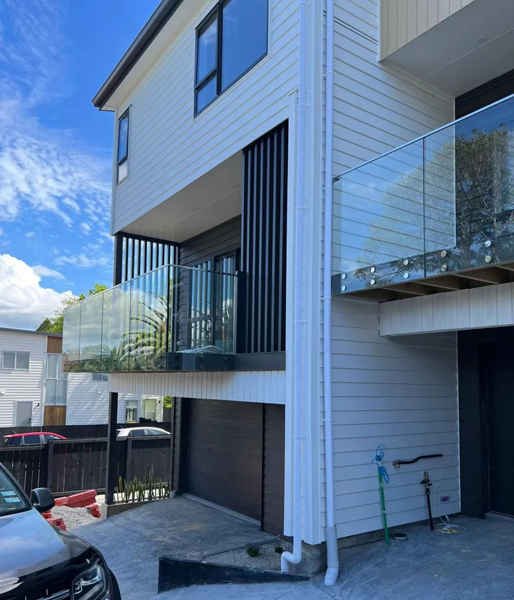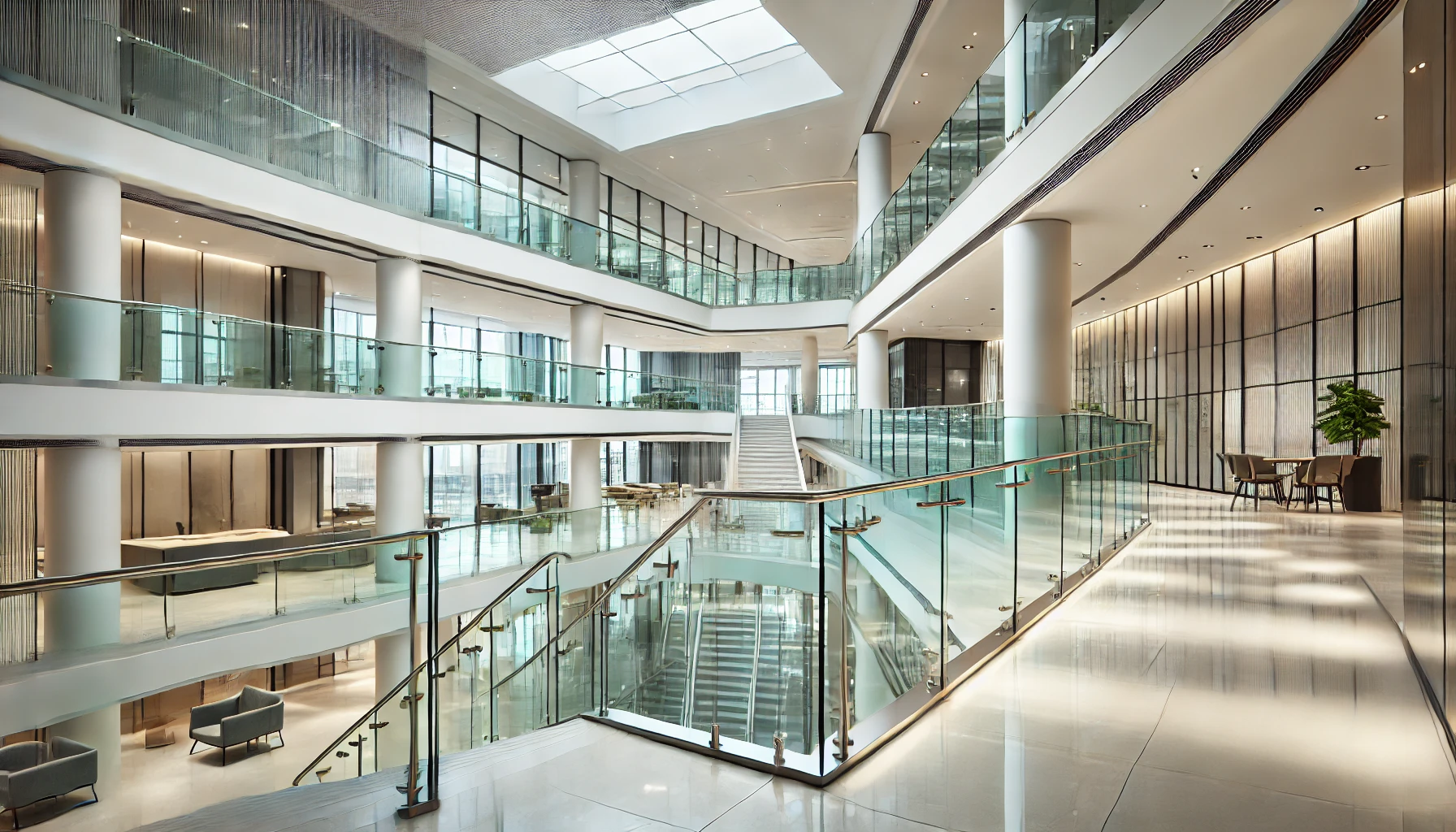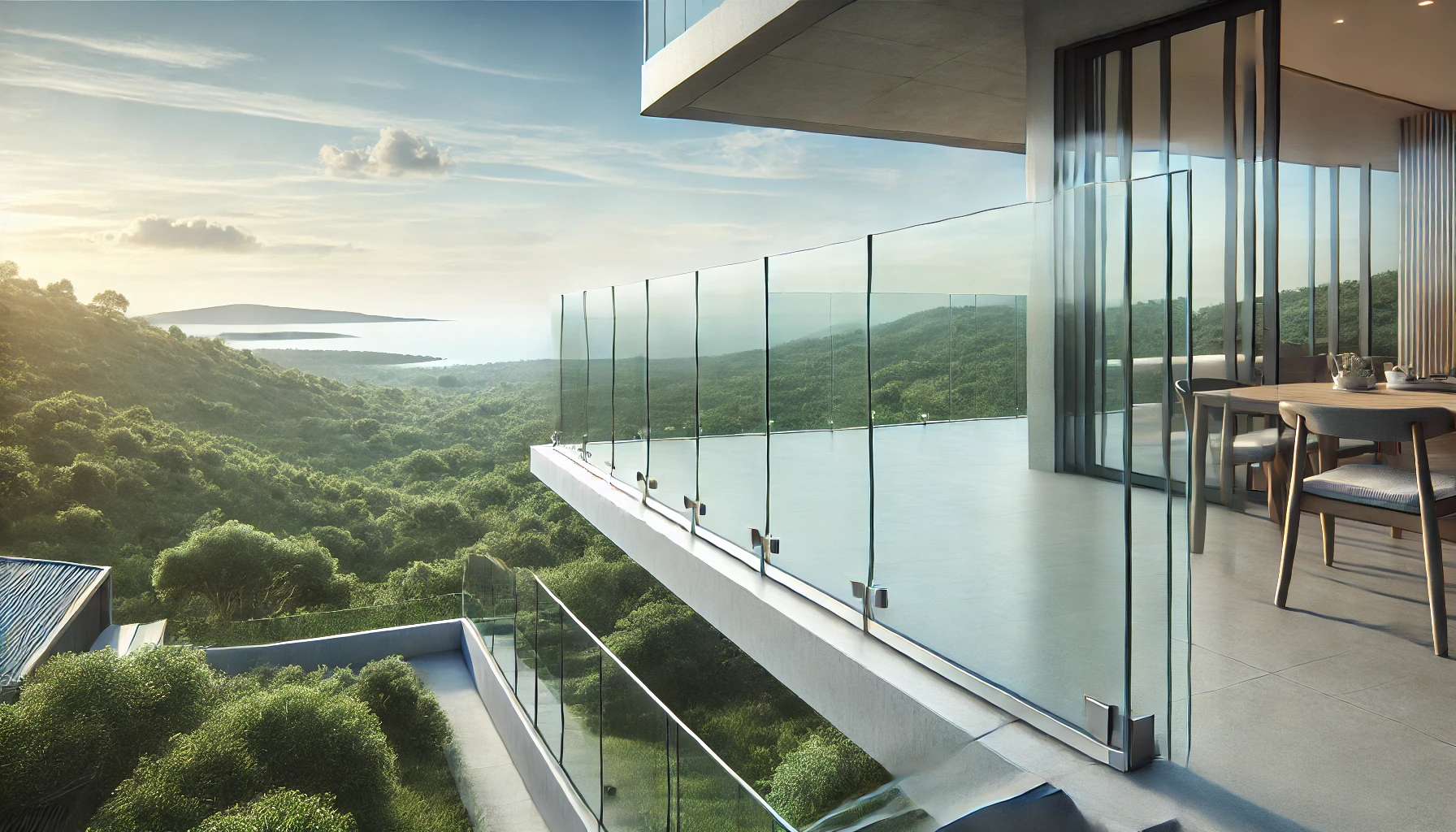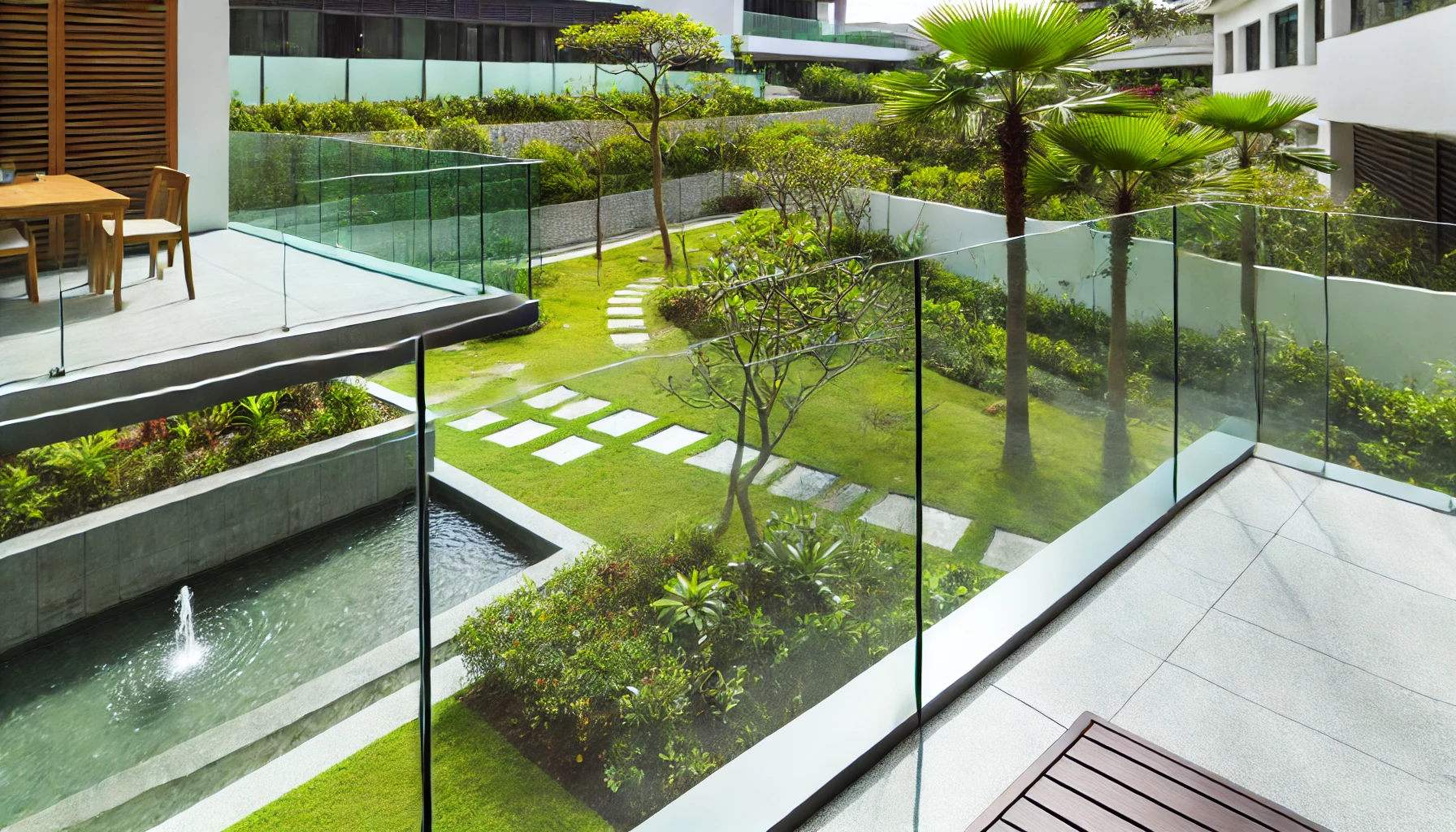Introduction
Glass railings are a versatile and elegant choice for both indoor and outdoor spaces. Their transparency and sleek design enhance the aesthetic appeal of any environment, from residential homes to commercial buildings. However, choosing the right glass railing for different settings requires careful consideration of various factors such as environmental conditions, safety requirements, and design preferences. This guide explores the key considerations when selecting glass railings for indoor and outdoor applications, helping you make informed decisions that balance beauty, functionality, and safety.
1. Understanding the Environmental Conditions
The first step in choosing the right glass railing is understanding the specific environmental conditions of the installation site. Different environments pose different challenges, and the glass railing must be able to withstand these conditions while maintaining its structural integrity and appearance.
- Indoor Environments: Indoor glass railings are typically installed in areas like staircases, balconies, and mezzanines. The primary concerns for indoor installations are aesthetic appeal, safety, and ease of maintenance. Since indoor environments are usually protected from harsh weather conditions, thinner glass panels and more delicate finishes can be used. Additionally, indoor glass railings often emphasize design elements like frameless glass, decorative accents, or integrated lighting to enhance the interior decor.
- Outdoor Environments: Outdoor glass railings are exposed to the elements, including wind, rain, UV radiation, and temperature fluctuations. As a result, outdoor railings require thicker, more durable glass and corrosion-resistant hardware. Laminated or tempered glass is often recommended for outdoor use due to its strength and safety features. The mounting system must also be robust enough to withstand wind loads and potential impacts. Outdoor railings should also be designed with drainage considerations to prevent water buildup and potential damage.
2. Glass Type and Thickness: Balancing Strength and Aesthetics
Selecting the appropriate glass type and thickness is crucial for ensuring the safety and longevity of glass railings, especially when comparing indoor and outdoor applications.
- Glass Type: The two main types of glass used in railings are tempered glass and laminated glass. Tempered glass is stronger than regular glass and shatters into small, blunt pieces, making it safer in the event of breakage. Laminated glass, on the other hand, consists of two or more glass layers with an interlayer that holds the glass together if it breaks. Laminated glass is often preferred for outdoor installations because it provides an added layer of safety and noise reduction, making it suitable for environments where noise control is a concern.
- Glass Thickness: The required thickness of the glass depends on the application and the load it needs to bear. Indoor railings may use thinner glass, typically ranging from 10mm to 12mm, as they are not exposed to harsh conditions. For outdoor applications, thicker glass, usually between 12mm and 21.5mm, is recommended to ensure it can withstand wind pressure, temperature changes, and potential impacts. The thickness also affects the visual appearance of the railing, with thicker glass providing a more substantial look, which might be desirable in certain designs.
3. Hardware and Mounting Systems: Ensuring Durability and Stability
The hardware and mounting systems used in glass railings play a critical role in their overall safety and durability. The choice of materials and installation methods varies significantly between indoor and outdoor applications.
- Indoor Railings: For indoor installations, the hardware is usually less exposed to corrosive elements, allowing for a wider range of materials and finishes. Stainless steel, aluminum, and even wood can be used for posts, clamps, and handrails. Frameless systems, where the glass is directly mounted into the floor or wall with minimal visible hardware, are popular indoors due to their clean and modern look. Clamps and posts can be designed with decorative finishes to complement the interior decor.
- Outdoor Railings: Outdoor railings require hardware that is highly resistant to corrosion, such as marine-grade stainless steel or specially coated aluminum. The mounting system must be designed to handle environmental stressors, including high winds and temperature fluctuations. Base shoe systems, where the glass panels are inserted into a metal channel anchored to the ground, are commonly used outdoors because they provide strong support and can accommodate thicker glass panels. Additionally, the mounting hardware should include drainage solutions to prevent water from accumulating and causing damage over time.
4. Design Considerations: Aesthetics and Functionality
The design of glass railings should not only meet safety and durability standards but also enhance the overall aesthetic of the space. The design choices for indoor and outdoor railings can vary widely based on the intended look and functionality.
- Indoor Railings: The design of indoor glass railings often focuses on creating a seamless integration with the interior architecture. Frameless glass railings are a popular choice for modern, minimalist interiors, offering an unobstructed view and a sense of openness. Handrails can be made of glass, metal, or wood, depending on the design theme. For spaces that require a more traditional look, glass panels can be combined with decorative metal or wood posts. Indoor glass railings can also be customized with frosted or tinted glass to add privacy or artistic elements.
- Outdoor Railings: Outdoor glass railings must balance aesthetics with functionality. While frameless designs are also popular outdoors, they must be carefully engineered to withstand environmental conditions. Outdoor railings often incorporate stainless steel or aluminum posts and handrails for added stability and durability. Clear glass is commonly used to preserve the view, but tinted or frosted glass can be chosen for privacy or to reduce glare. The design should also consider maintenance, opting for materials and finishes that are easy to clean and maintain in an outdoor setting.
5. Safety and Compliance: Adhering to Regulations
Both indoor and outdoor glass railings must comply with local building codes and safety regulations. These standards ensure that the railings are safe for use and can withstand the required loads.
- Building Codes: Building codes specify the minimum height for railings, the load they must bear, and other safety features such as handrails. For example, the International Building Code (IBC) requires that guardrails be at least 42 inches (1070mm) high in commercial settings, with the ability to withstand a certain amount of force. These requirements apply to both indoor and outdoor railings, though outdoor applications may have additional considerations for wind loads and exposure to the elements.
- Safety Features: In addition to meeting building code requirements, glass railings should be designed with safety features such as handrails and barriers to prevent falls. Laminated glass is often recommended for areas where safety is a primary concern, as it holds together even when broken, reducing the risk of injury. Indoor railings may also incorporate child-proof designs, such as tighter spacing between posts or the use of glass panels that extend to the floor to prevent climbing.
6. Maintenance and Longevity: Ensuring Long-Term Performance
Proper maintenance is essential for ensuring the longevity and performance of glass railings, especially in outdoor environments.
- Indoor Railings: Maintenance for indoor glass railings typically involves regular cleaning to remove fingerprints, dust, and other smudges. The hardware should be checked periodically for signs of wear, such as loose screws or hinges. Since indoor railings are less exposed to environmental stressors, they generally require less intensive maintenance, but regular inspections are still important to ensure safety.
- Outdoor Railings: Outdoor railings are subject to harsher conditions and therefore require more frequent maintenance. Cleaning is necessary to remove dirt, grime, and water spots, which can accumulate on the glass and metal components. The hardware should be inspected regularly for signs of corrosion, and any damaged components should be replaced promptly. Additionally, outdoor railings may require periodic sealing or coating to protect the glass and metal from the elements and to prolong their lifespan.
Conclusion
Choosing the right glass railing for indoor and outdoor environments requires a thorough understanding of the specific conditions and requirements of each setting. By considering factors such as material selection, glass thickness, hardware, design, and maintenance, you can ensure that the glass railing not only enhances the aesthetic appeal of the space but also provides safety and durability. Whether you are designing for a sleek indoor staircase or a robust outdoor balcony, the right glass railing can elevate the look and functionality of your project, making it a standout feature in any environment.







